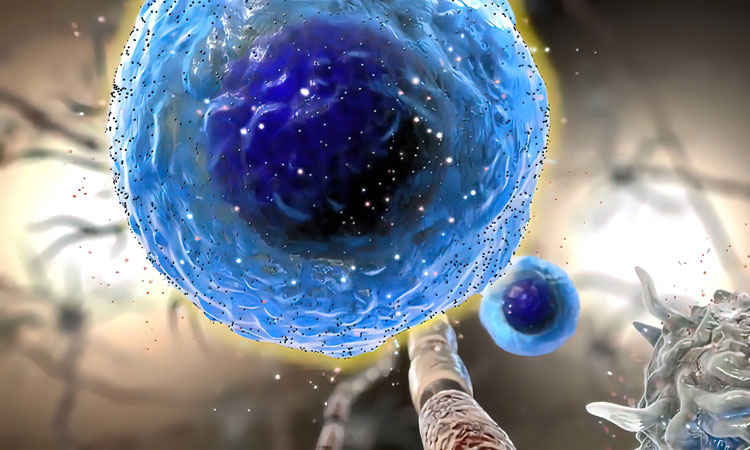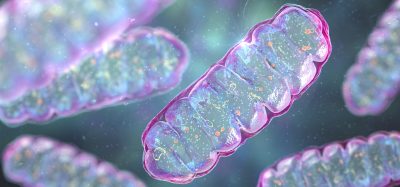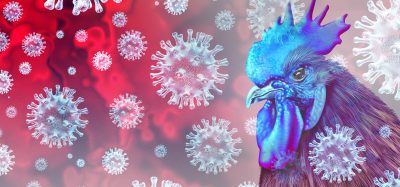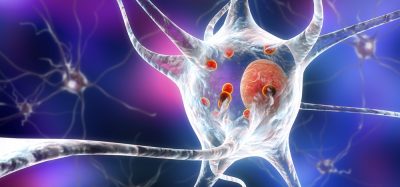Chemokines work undercover as drivers of autoimmune disease
Posted: 18 July 2022 | Mandy Parrett (Drug Target Review) | No comments yet
New research has uncovered a hitherto unknown mechanism whereby chemokines form DNA-bound nanoparticles that play a key role in autoimmune disorders.


Just when you think you understand which molecules do what – scientists uncover new surprises that shift the landscape of our comprehension of diseases. This happened in a recent study at Weill Cornell Medicine and Hospital for Special Surgery (HSS) in the US, where scientists appear to have identified an important mechanism in the skin disorder scleroderma, suggesting similar actions in other autoimmune diseases.
Chemokines are small proteins that direct immune cells towards areas of infection in the body. Having previously discovered that a particular chemokine CXCL4 was found in elevated numbers in patients with scleroderma, a condition that causes inflammation and hardening of the skin, the team of researchers undertook further investigation. The results of this study, published in the Journal of Experimental Medicine, reveal an entirely new mode of triggering the immune system, through which chemokine-DNA nanoparticles can induce inflammation, specifically CXCL4.
Reflecting on their findings, senior author Dr Franck Barrat, professor of microbiology and immunology at Weill Cornell Medicine and the Michael Bloomberg Chair and senior scientist at HSS, explained: “We had a project looking at scleroderma and it was shown by us and others a few years ago that patients with this condition have an elevated level of the chemokine CXCL4 in their blood. But the role of this chemokine in disease is unclear and we didn’t expect the chemokine to provoke this particular immune response.”
Results in preclinical models suggest that this mechanism may play a central role not only in scleroderma, but in other autoimmune diseases such as lupus, with different DNA-chemokine nanoparticles underlying different diseases. For example, while CXCL4 appears to be important in scleroderma, the chemokine CXCL10 may perform a similar function in lupus.
In setting up controls for one of their experiments, Dr Barrat’s team, including first author Dr Yong Du, a postdoctoral associate in microbiology and immunology at Weill Cornell Medicine and a member of the HSS Research Institute, discovered that CXCL4 and several other chemokines could induce immune cells called plasmacytoid dendritic cells (pDCs) to produce interferon-alpha. Surprisingly, the induction appeared to be independent of known chemokine receptors, indicating that these molecules were activating the immune cells through some previously unknown mechanism.
Subsequent experiments revealed that the chemokines can bind pieces of DNA to form nanoparticles, which then bypass the cells’ chemokine receptors to induce interferon production directly.
You may also like:
A single approach to creating effective cancer and autoimmune disease therapeutics
This new mechanism that suggests an underlying cause in autoimmune diseases appears to act independently from the normal function of chemokines, giving hope that corrective strategies shouldn’t interfere with normal healthy immune response.
The researchers also collaborated on a related study, published in Nature Communications, that shows that CXCL4 can induce a similar inflammatory response in monocytes, another important class of immune cells. Taken together, the findings point toward possible strategies to shut down autoimmunity without interfering with normal immune responses.
“It tells you the type of response that you have to stop, not necessarily at the DNA-chemokine level, but potentially more downstream in the cells themselves,” explained Barrat.
Related topics
Analysis, Disease Research, DNA, Drug Targets, Molecular Biology, Molecular Targets, Targets
Related conditions
Lupus, scleroderma
Related organisations
Weill Cornell Medicine
Related people
Dr Franck Barrat, Dr Yong Du








